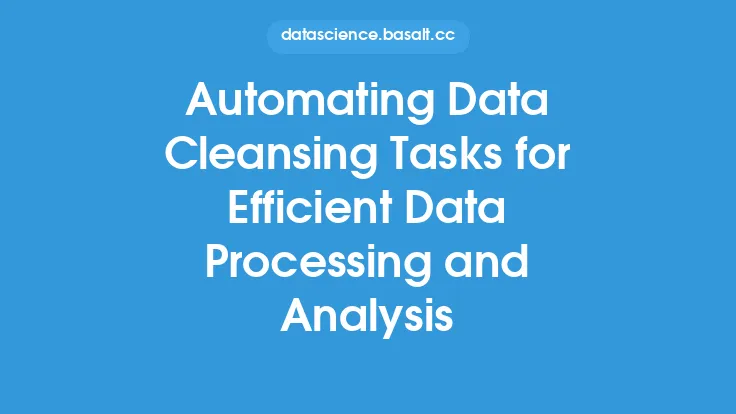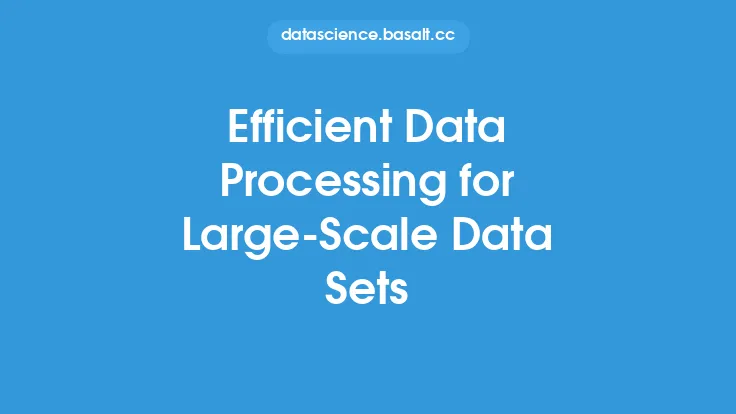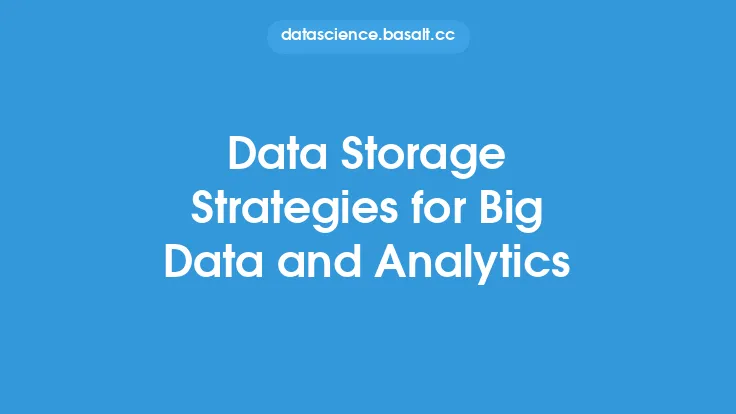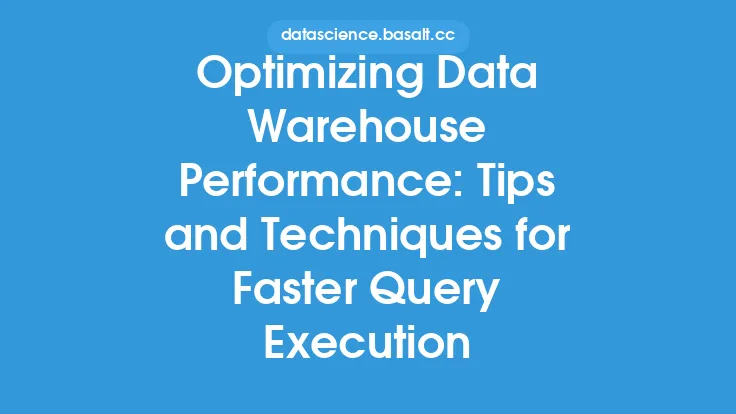When dealing with big data and high-volume data sets, data cleansing becomes a critical component of ensuring data quality. The sheer volume and complexity of these data sets can make it challenging to identify and correct errors, inconsistencies, and inaccuracies. However, effective data cleansing is essential to prevent poor data quality from affecting business outcomes, predictive modeling, and machine learning outcomes. In this article, we will delve into the key considerations for data cleansing in the context of big data and high-volume data sets.
Introduction to Data Cleansing for Big Data
Data cleansing for big data involves a range of activities, including data profiling, data validation, data standardization, and data transformation. The goal of these activities is to ensure that the data is accurate, complete, and consistent, and that it conforms to the required format and structure. Big data sets often comprise diverse data sources, including structured, semi-structured, and unstructured data, which can make data cleansing more complex. Furthermore, the large volume of data can make it difficult to manually inspect and correct errors, emphasizing the need for automated data cleansing techniques.
Data Quality Issues in Big Data
Big data sets are prone to various data quality issues, including missing or null values, duplicate records, inconsistent data formats, and incorrect or invalid data. These issues can arise from a range of sources, including data entry errors, system glitches, and data integration problems. For instance, when integrating data from multiple sources, differences in data formats and structures can lead to inconsistencies and errors. Moreover, the large volume of data can make it challenging to detect and correct these issues, which can have significant consequences for business outcomes and decision-making.
Data Profiling for Big Data
Data profiling is a critical step in the data cleansing process, as it helps to identify data quality issues and understand the characteristics of the data. Data profiling involves analyzing the data to identify patterns, trends, and relationships, as well as to detect anomalies and outliers. For big data sets, data profiling can be performed using various techniques, including statistical analysis, data visualization, and machine learning algorithms. These techniques can help to identify issues such as missing values, data inconsistencies, and data errors, and provide insights into the data's quality and reliability.
Data Validation and Verification
Data validation and verification are essential steps in the data cleansing process, as they help to ensure that the data is accurate and consistent. Data validation involves checking the data against a set of predefined rules and constraints, such as data formats, ranges, and patterns. Data verification, on the other hand, involves checking the data against external sources, such as reference data or master data. For big data sets, data validation and verification can be performed using automated techniques, such as data quality rules and data validation algorithms. These techniques can help to identify and correct errors, and ensure that the data is consistent and reliable.
Data Standardization and Transformation
Data standardization and transformation are critical steps in the data cleansing process, as they help to ensure that the data is in a consistent format and structure. Data standardization involves converting the data into a standard format, such as a specific date format or a standard unit of measurement. Data transformation, on the other hand, involves converting the data from one format to another, such as from a string to a numeric value. For big data sets, data standardization and transformation can be performed using automated techniques, such as data transformation algorithms and data mapping tools. These techniques can help to ensure that the data is consistent and reliable, and that it can be easily integrated with other data sources.
Scalability and Performance Considerations
When dealing with big data and high-volume data sets, scalability and performance are critical considerations for data cleansing. The large volume of data can make it challenging to perform data cleansing tasks, such as data profiling, data validation, and data transformation, in a timely and efficient manner. To address these challenges, data cleansing tools and techniques must be designed to scale horizontally and vertically, and to handle large volumes of data. Additionally, data cleansing tasks must be optimized for performance, using techniques such as parallel processing, distributed computing, and data partitioning.
Data Governance and Quality Metrics
Data governance and quality metrics are essential for ensuring that data cleansing is effective and efficient. Data governance involves establishing policies, procedures, and standards for data management, including data cleansing. Quality metrics, on the other hand, involve measuring the quality of the data, using metrics such as data accuracy, completeness, and consistency. For big data sets, data governance and quality metrics can help to ensure that data cleansing is performed consistently and effectively, and that the data is reliable and trustworthy.
Conclusion
In conclusion, data cleansing is a critical component of ensuring data quality for big data and high-volume data sets. The sheer volume and complexity of these data sets can make it challenging to identify and correct errors, inconsistencies, and inaccuracies. However, by using automated data cleansing techniques, data profiling, data validation, data standardization, and data transformation, organizations can ensure that their data is accurate, complete, and consistent. Additionally, scalability and performance considerations, data governance, and quality metrics are essential for ensuring that data cleansing is effective and efficient. By prioritizing data cleansing and using the right tools and techniques, organizations can unlock the full potential of their big data and high-volume data sets, and make informed decisions that drive business success.





